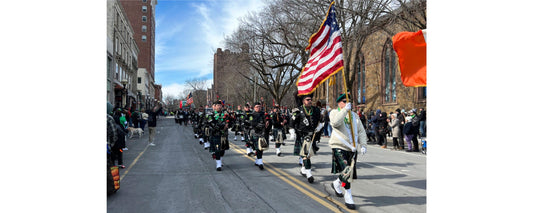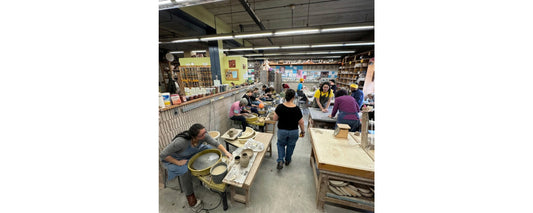August is Summer Reading Month in Daily Nutmeg, and Ainissa Ramirez, photographed above by Michael Marsland, is this week’s featured author. Please enjoy this excerpt from Ramirez’s book The Alchemy of Us: How Humans and Matter Transformed One Another (The MIT Press, 2020).
* * *
Young Ernest Hemingway was a clean-shaven and strapping Midwestern teen who had ambition, but not the kind that went to college. Born nearly seventy years after the telegraph, in 1899, from an early age his mother noticed he was “’fraid of nothing,” so after he graduated from high school in 1917, he left the quiet world of Oak Park, Illinois, with its understood rhythm of birth, school, marriage, children, work, and death, and traveled southwest, heading five hundred miles from all he knew. With his ticket and trunk, enthusiasm and unbounded energy, the tall Hemingway boarded a train and arrived on October 15 at the brand-new Union Station of Kansas City, Missouri. For many travelers, this railroad hub was a starting point. But for Ernest Hemingway, it was his last stop. For a brief several months, he came to work at one of the best papers in the nation, the Kansas City Star, which unknowingly set him on a course to change the use of American language with the help of the telegraph.
sponsored by
As a cub reporter in a rough-and-tumble metropolis, Hemingway witnessed more life in a few months than during his eighteen years at home. Kansas City was a dish composed of heaping amounts of crime and large helpings of corruption, with a splash of jazz. The muchness of it all strained everyone within its city limits, particularly Hemingway, since he visited the underbelly routinely. As the lowest on the news gathering food chain, Hemingway held interviews at police stations, at crime scenes, and in emergency rooms. His sources consisted of professionals of all types, including doctors, gamblers, policemen, prostitutes, morticians, and thieves. When working on a story, Hemingway dashed to a typewriter in the newsroom and punched out words quickly, before the page was “snatched out” by the copy boy’s fingers.
Years later, when reminiscing about his time at the Star, Hemingway recalled that the newsroom was a place where he honed his craft. There, he gained, as he said, “the best rules I’ve ever learned in the business of writing.” Hemingway found a mentor, the famous Kansas City newspaperman Lionel Moise, who told him, “pure objective writing is the only form of storytelling.” The other advice Hemingway received was not from a person but from a list on newsprint called the Star Copy Style sheet, which offered over one hundred tips on how to write. From the outset, this list set the tone for what the newspaper editors wanted. The first suggestion stated:
“Use short sentences. Use short first paragraphs. Use vigorous English. Be positive, not negative.”
With its own concise advice, this sheet emulated what it wanted from reporters. Within its three columns, more specific rules stated:
“Eliminate every superfluous word.”
“Avoid the use of adjectives.”
“Watch out for trite phrases.”
The news editors hungered for lean language, and Hemingway served up skinny sentences. Newspapers, like the Kansas City Star, required economic prose, because the flow of information was limited by the technology at the paper. In addition to the typewriter and lithographic press, prose was shortened by the telegraph.
From the early use of the telegraph in 1832, decades before Hemingway’s days at the Star, Samuel F.B. Morse frequently scolded his young assistant Alfred Vail as they prepared to demonstrate the telegraph in DC before heads of state. “Condense your language more,” said Morse, “leave out ‘the’ whenever you can.” Morse and Vail wrote out their messages by hand and then translated them into dots and dashes before tapping out the messages to each other. For swifter messages, Morse believed Vail must begin with briefer prose and required Vail to trim the fat—removing any unnecessary words that didn’t add to the meaning, like prepositions or flowery language. With his telegraph, Morse became the potter of American English.
Morse’s telegraph would later profoundly impact the distribution of news. Before his invention, newspapers from different cities sent reporters to boat docks to obtain accounts that crossed the ocean. These correspondents waited for ships, collected the news, and then passed their reports on to headquarters by horse, train, boat, or pigeon. With the development of the telegraph, however, information from faraway places, which required hours to receive, took only minutes. Unfortunately, although this new technology had the advantage of speedy communication, it also had a major flaw. Before clever Thomas Edison enabled two, and later four, messages to travel down the line, telegraph wires could send only one message at a time. So, when a story broke or a news ship arrived, eager reporters rushed to the telegrapher’s office. A correspondent from a Boston paper, and a New York paper, and a Missouri paper, and a Virginia paper had to wait their turn, as at a single check-out counter, for their story to be tapped out and sent. To mitigate this logjam in the flow of information, rules were put in place: One rule restricted the amount of time for their transmission (often to fifteen minutes). The other rule stipulated that messages had to be brief.
When telegraph companies formed, they created a pricing structure, which motivated a customer to keep messages short, and to keep the telegraph lines free. They charged a flat rate for the first ten words, and each additional word was one-tenth that fee. With such a pricing structure, a person could send a ten-word message for ten cents (or $3 today) from Washington, DC, to Baltimore. That rate increased with longer distances, so that same message sent from Washington, DC, to Philadelphia cost 30 cents (or $9) or 50 cents ($15) to New York City. Such schemes convinced the customer to condense their communication, and the public got the message. By 1903, half of the transmissions were ten words or fewer and the average message was twelve words. Years earlier, in 1844, when Morse sent his four-word official message, “What Hath God Wrought,” it seems he not only heralded the age with a prophetic Biblical reference, he set a benchmark for brevity. …
The constraint of the telegraph chiseled the language of the newspaper and Hemingway, who loved this lean and unadorned prose, embraced it as his own. A little more than six months after starting his job at the Kansas City Star, Hemingway left. The Great War was underway and he was itching to be part of the action. He attempted to enlist, but his bad eyesight was undesirable, so he went to Italy to be a Red Cross ambulance driver and took the lessons about writing from the Star with him. With time, the success of his books propelled Hemingway’s short declarative sentences to a quintessential American style. Generations later, students would soon be encouraged by English and literature teachers to adopt Hemingway’s style, unknowingly furthering the telegraph’s reach.
* * *
The Alchemy of Us: How Humans and Matter Transformed One Another
by Ainissa Ramirez
The MIT Press, 2020
Where to buy: RJ Julia | Bookshop | Barnes & Noble








